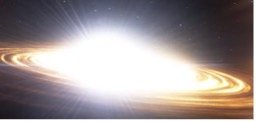
Topics in Astronomy
Some Course Highlights
Galileo’s discovery of the moons of Jupiter
In 1610 Galileo constructed one of the world’s first telescope with a diameter of only 1.5 inches. Although miniscule by today’s standards, his telescope had an enormous impact. One of his discoveries is shown below in photographs taken by the author in August of 2021.
These photographs show Jupiter’s 4 moons orbiting the planet over 17 nights. Orbital periods for Io, Europa, Ganymede, and Callisto are 1.77, 3.55, 7.15, and 16.69 days respectively. This observation contradicted the view of the influential second century astronomer, Ptolemy, who held that all celestial bodies orbit the earth. Ptolemy’s earth-centered outlook was shaken to the core.
In 1610 Galileo discovered the phases of Venus.
This image of the planet Venus was taken by the author in July 2020. Galileo’s telescope was one of the first ever constructed with a diameter only 1.5 inches. Although miniscule by today’s standards, its impact was enormous. Galileo’s discovery of the phases of Venus contradicted the idea that the sun and planets orbited the earth, a view which had prevailed for more than 2,000 years … since the time of Aristotle. Now we had a heliocentric view … the earth and planets orbited the sun!
Henrietta Swann Leavitt took another step toward changing world view. She found that some stars in the Small Magellanic Cloud brightened, dimmed, and brightened in a precise time period. Furthermore, she found that this periodicity correlated with the star’s apparent magnitude… termed cepheid variable stars.
Because all of the stars in the Cloud were at about the same distance, Henrietta realized that the apparent magnitude represented the star’s intrinsic magnitude (its intrinsic brightness). This was published in 1912. After others calibrated this relationship, the period of a cepheid variable could be used to measure distances for up to 100 million light years. Only 12 years later, Edwin used Henrietta’s results for cepheid variable stars to prove that distant nebulae lay outside of our Milky Way and were in fact other galaxies!
The Hubble Space Telescope… too big to fail.
Soon after its launch in 1990, the Hubble Space Telescope was found to have a flawed mirror. The two images above show the galaxy Messier 100 prior to and after correction. The flaw caused spherical aberration in its primary mirror.
Ultimately Hubble accomplished several important goals: Improved assessment of stellar distances which allowed much better estimates of the age of the universe, supporting evidence that the universe’s expansion was accelerating, determination that supermassive black holes are probably at the center of most galaxies, and the discovery of some of the most distant objects in the universe, up to 13.4 billion light years away. Over 15,000 papers have been published in peer reviewed journals based on observations with Hubble.
The space telescope is named for Edwin Hubble who used a 100-inch reflecting telescope to demonstrate that there were galaxies outside of our own galaxy, the Milky Way. Along with Georges Lemaitre, he characterized what came to be named the Hubble-Lemaitre law: Velocity = Ho * Distance.
The James Webb Space Telescope
Why launch telescopes into space?
More than half of the electromagnetic spectrum is blocked by our atmosphere, and each spectrum carries specific types of information regarding stars, galaxies, dark matter, dark energy, and exoplanets. Telescopes, such as Hubble and James Webb (pictured in the button for this section), have been launched into outer space to detect these spectra and to avoid the distortions of electromagnetic radiation by our atmosphere. The James Webb is the largest telescope ever launched and is made up of 18 hexagonal mirrors with a total diameter of about 21 feet (6.5 meters). It is so large (its sun shield is the size of a tennis court!) that it had to be folded multiple times to fit into its rocket and then unfolded in space … a remarkable engineering feat. Its goals include a search for the first stars and galaxies and a characterization of the atmospheres of exoplanets. For example, finding significance amounts of oxygen in these atmospheres would be compatible with life.
As with sound waves, the observed wavelength of light from a star changes with movement.
The degree of red shift is precisely correlated with the speed of the star.
Jocelyn Bell, the research student who discovered the first pulsar.
While a PhD student at the University of Cambridge, Jocelyn Bell had been reviewing up to 96 feet of paper data per night from a radio telescope designed by her supervisor, Antony Hewish. On November 28, 1967 after three months of grueling work she noticed “a bit of scruff”. The pulses were evenly spaced every 1.33 seconds. Her findings were repeatedly dismissed by Hewish, who felt that the observations were artifactual but Bell persisted and ultimately convinced him. Nonetheless she was excluded from the 1974 Nobel Prize, which went only to Antony Hewish and Martin Ryle. Her response to one of the most controversial Nobel Prizes ever awarded was deferential: "I believe it would demean Nobel Prizes if they were awarded to research students, except in very exceptional cases, and I do not believe this is one of them." But wait a tick! This painful story has a happy ending. She became President of the Royal Astronomical Society and then President of the Institute of Physics. In 2018 for her discovery of pulsars she was given the Special Breakthrough Prize in Fundamental Physics accompanied by 3 million dollars, all of which she donated "to fund women, under-represented ethnic minority and refugee students to become physics researchers".
The Tunguska event of June, 30th 1908 in central Russia.
The explosion of a meteor 3 to 6 miles above earth was estimated to have been 50 to 60 meters in diameter (roughly 60 years) flattening 80 million trees over an area of 2,150 km2, the equivalent of about 25 to 30 miles in diameter. Fragments of nickel-iron alloy indicate that this was an asteroid.
What is behind the theory of dark matter?
One of the most compelling findings pointing towards dark matter is that the predicted velocity of rotation of the arms of spiral galaxies differs from the observed velocity.
Astronomers have applied Johannes Kepler’s third law to predict this velocity. Although a scientist, Kepler believed that "the geometrical things have provided the Creator with the model for decorating the whole world". Based in part on data accumulated while working with his mentor, Tycho Brahe, Kepler derived the relationship from planets circling the sun. He reported his findings around 1618, shortly after his colleague, Galileo, discovered the phases of Venus in 1610.
By analogy, the sun corresponds to the center of a spiral galaxy, and the planet corresponds to the galaxy’s arms. In the example below, after a distance between the galaxy and its arms of about 10,000 light years, the predicted velocity of rotation declines sharply with increasing distance. However, the measured rotational velocity is approximately flat with increasing distance.
Unseen matter explains this discrepancy. (There are several other types of evidence supporting the concept of dark matter.)
OK. But what is dark matter? A number of possibilities have been considered: hydrogen gas, ionized hydrogen, interstellar dust, very small objects, black holes, and brown dwarfs. All of these possibilities have been dismissed. Even though dark matter makes up more than 80% of all matter, it remains one of the great unsolved mysteries of the universe.
Sergeant Clifford Stone testifies at the 2001 National Press Club. See time 1:38:33. Also see time 1:06 for the testimony of Major George Filer. This event was organized by Doctor Steven Greer who brought together more than 20 reputable witnesses of UFOs. Their professions were in the U.S. military, U.S. government, airport traffic control, science, and engineering. The 2 hours of sworn testimony can be played from the beginning.






















